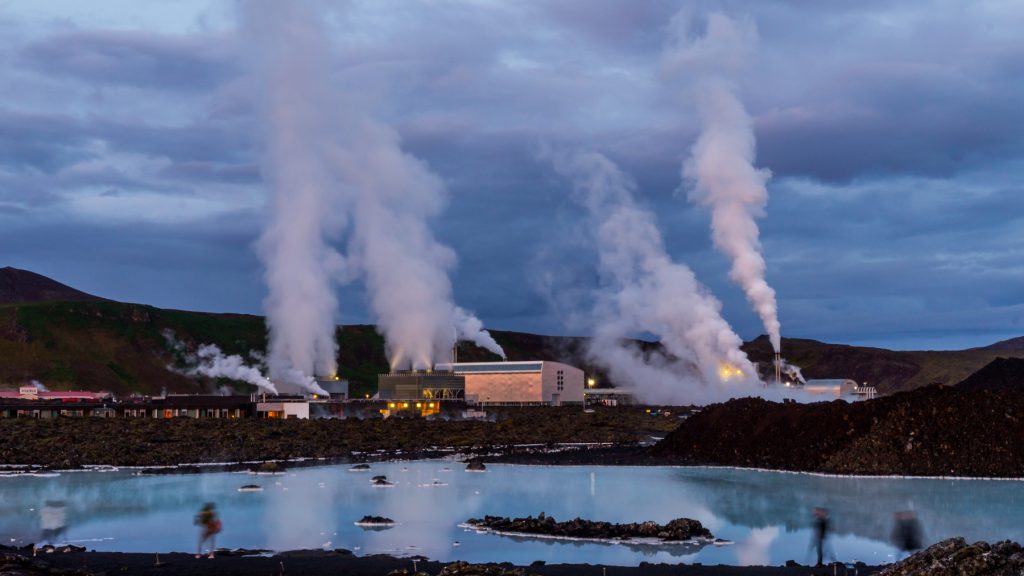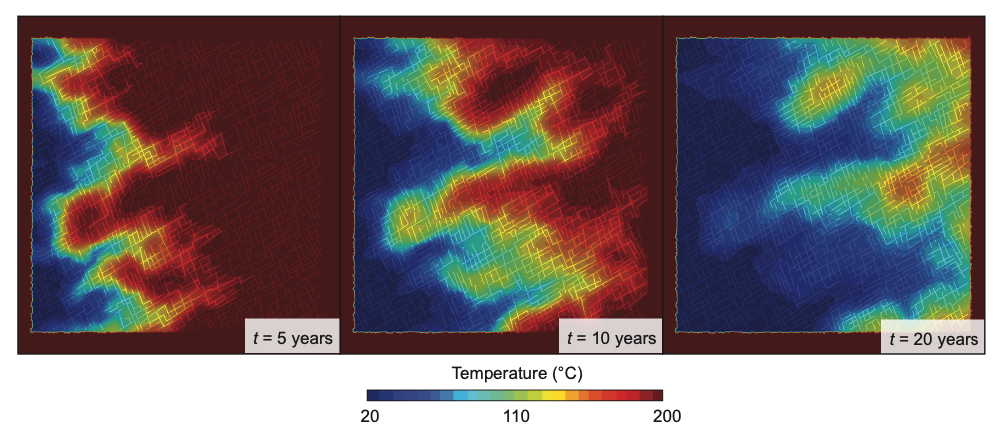THE CHALLENGE
- In the deep geological storage of heat-emitting nuclear waste, coupled THM phenomena need to be addressed as part of the design process and performance and safety assessment of any underground repository.
- In enhanced geothermal systems (EGS), prediction of convective heat transport, heat exchange in fractured media, fluid migration, and rock mass deformations is crucial for energy recovery quantification, lifetime performance assessment, and induced seismicity.
- Quantification of the above THM effects is complicated by their non-linearity, largely different characteristic temporal and spatial scales, and dependency on rock mass fabric features.


THE SOLUTION
- Irazu is equipped with modelling capabilities that are well suited for the assessment of key coupled THM processes occurring in fractured, subsurface environments:
- heat conduction in solid rock and fluid-filled fractures;
- thermal advection and convective heat transfer between fracture fluid and solid rock; and
- two-way coupling routines between different solvers, including thermal deformations and stresses.
- Thanks to GPU computing, coupled THM simulations in discontinuous media can be executed at unprecedented speeds.
THE RESULTS
- Predict initiation and evolution of thermally-induced fractures around emplacement tunnels for nuclear waste and quantify possible effects on the isolation properties of the host rock for nuclear waste repositories.
- Analyze the temporal evolution of stresses, displacements, and fracture slippages induced by the advancing cold front in enhanced geothermal systems (EGS).
- Improve the fundamental understanding of complex coupled processes in EGS to help predict their energy recovery, performance, and thermal breakthrough, and to assess the potential of induced seismicity.
